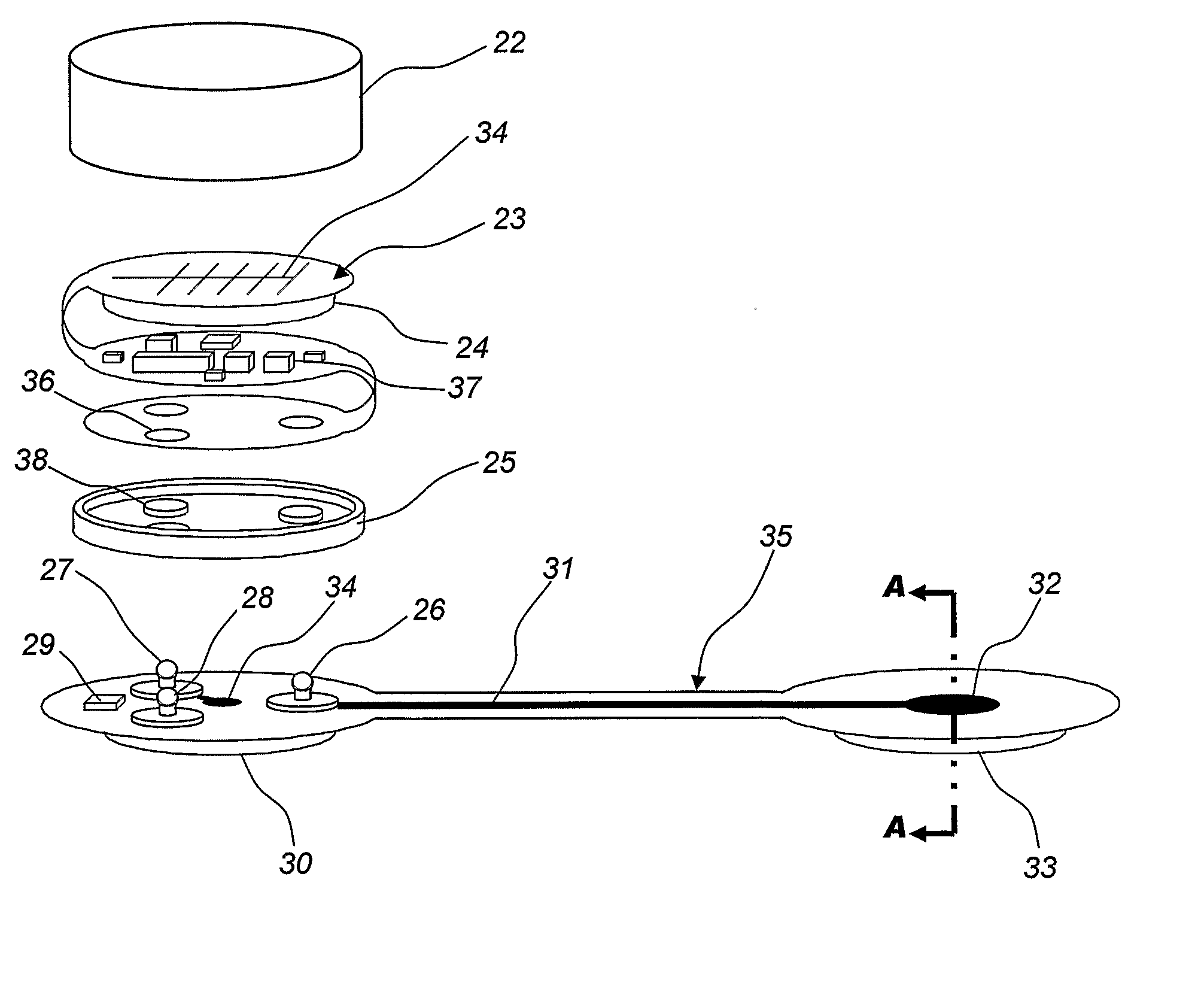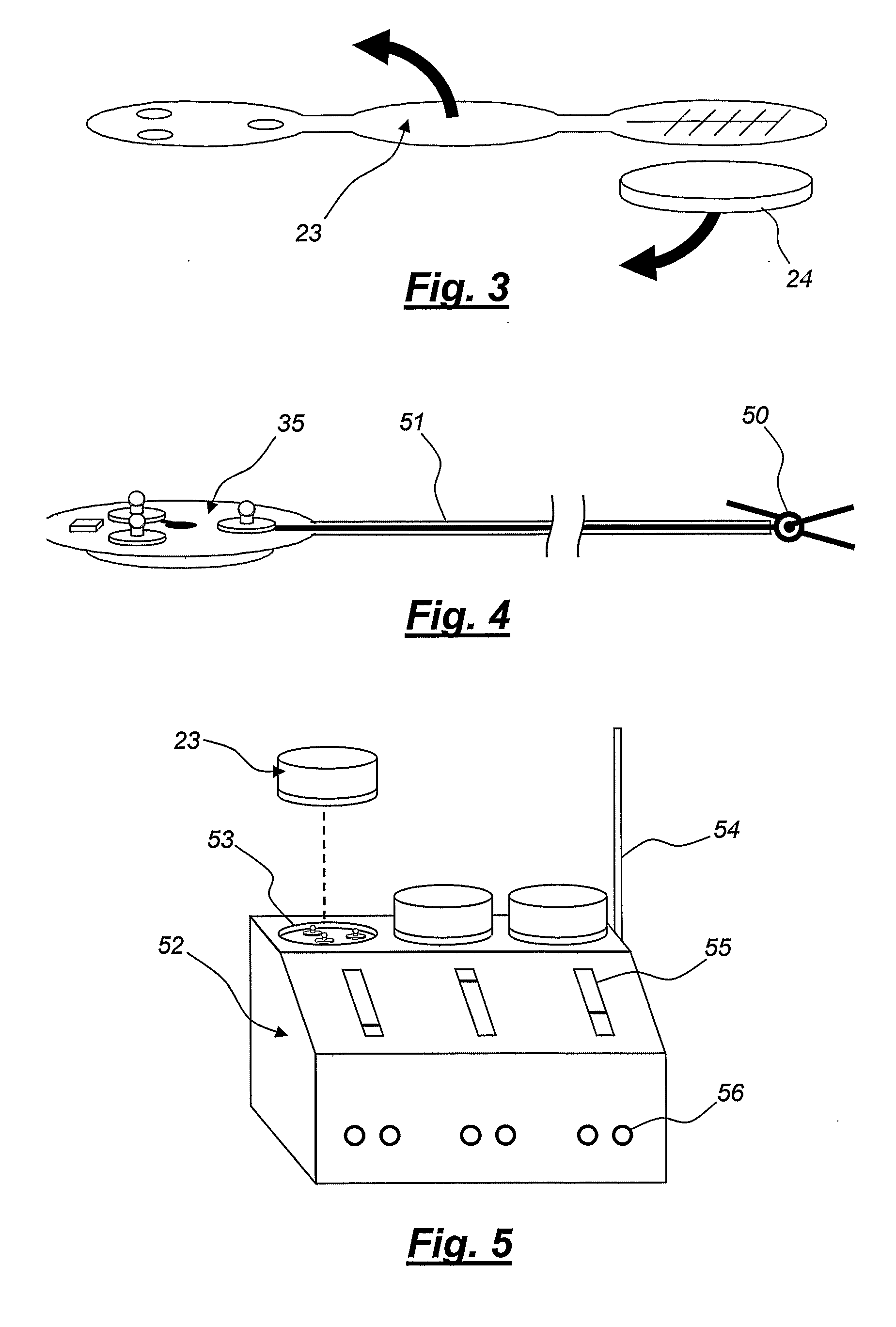Wireless Electrode for Biopotential Measurement
a biopotential voltage and wireless technology, applied in the field of wireless electrodes for biopotential voltage measurement, can solve the problems of long electrode wires, affecting the accuracy of measurements, affecting the utility of the system, etc., and achieve the effect of improving signal detection and being simple to set up and us
- Summary
- Abstract
- Description
- Claims
- Application Information
AI Technical Summary
Benefits of technology
Problems solved by technology
Method used
Image
Examples
Embodiment Construction
[0036] A sealed electronics module is described which encloses a flexible printed circuit with various integrated circuit devices attached. These integrated circuits include amplifiers, analog to digital converters, a microcontroller, random access memory, and a digital radio. Also included in the module are a battery and an antenna integrated onto the flexible circuit.
[0037] The invention also includes a flexible electrode strip with at least one electrode contact affixed to each end. A memory chip containing a digital identifier is affixed to the electrode strip. Contact plugs are affixed to the electrode strip and are electrically connected to electrode pads and to the identifier memory chip.
[0038] The electrode strip has an adhesive backing so that it can be adhesively affixed to a location on a subject's skin, such as the forehead. The electrode contacts may be impregnated with an electrolytic substance to enhance the skin conductance. Once the electronics module is attached ...
PUM
 Login to View More
Login to View More Abstract
Description
Claims
Application Information
 Login to View More
Login to View More - R&D
- Intellectual Property
- Life Sciences
- Materials
- Tech Scout
- Unparalleled Data Quality
- Higher Quality Content
- 60% Fewer Hallucinations
Browse by: Latest US Patents, China's latest patents, Technical Efficacy Thesaurus, Application Domain, Technology Topic, Popular Technical Reports.
© 2025 PatSnap. All rights reserved.Legal|Privacy policy|Modern Slavery Act Transparency Statement|Sitemap|About US| Contact US: help@patsnap.com



